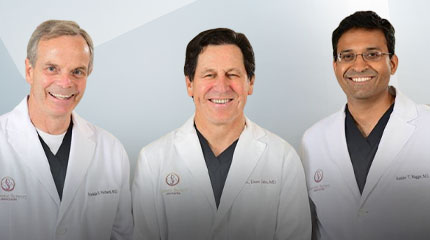Page Contents
CONTACT US
TEXTING AVAILABLE! For a text response feel free to text the number provided on your screen after filling out this form.
Skin Care
Conveniently located to serve the areas of Maryland, Virginia and Washington, D.C.
About The Skin
The skin, our body’s largest organ is both a complex and multipurpose organ. It protects the body against injury, chemicals, bacteria and even UV light. It regulates body temperature and is a vital part of our immune system. In addition, it has a wonderful power to constantly repair itself.
The skin is made of three layers. The epidermis (the outermost layer-which has five sublayers) the dermis (the middle or supporting layer) and the subcutis (bottom or fatty layer).
The epidermis, the layer we see and touch is very tough but microscopically thin. It is the layer with the highest content of water. However, as we mature, the skin’s ability to retain water decreases which cause the skin to become dehydrated. This is why many of us feel the need to use a moisturizer when we reach our mid 20’s. The melanocytes (the cells responsible for skin’s pigment) are present in the lower layers of the epidermis. These protective cells produce pigment (melanin) in response to ultraviolet rays, skin trauma, and/or hormones. Melanocytes migrate into individual cells to form a physical umbrella over the cell’s nucleus. This “brown umbrella” (a suntan) is created to protect the cell’s nucleus from even further sun damage and sunburn.
Because a tan is created only when the skin is confronted with injury, there is NO such thing as a healthy tan (unless it comes from a self-tanner). When severe damage has occurred and as we mature, these cells often coagulate into clumps causing hyperpigmentation (age spots).
The dermis (middle layer) is often referred to as the living skin. This layer is made of collagen (95%) and elastin ( 3 %) protein fibers that are woven together in a microscopic network. Collagen enables the skin to stretch and elastin brings it back to form. Elasticity depends on the well-balanced water content in the dermis and other skin layers. The dermal layer is also responsible for supporting the epidermis the skin’s repair, the immune system, and the sensory system.
The subcutis (the bottom layer) consists mainly of fat and cells interspersed with blood vessels, nerve fibers, and muscle fibers. This layer acts as a protective cushion for what lies above it and below it.
Frequently Asked Questions
How our skin ages
The skin, which has the ability to renew itself, goes through a natural shedding process called desquamation. This cellular renewal takes about 30 days in normal skin. However, as we age, this natural shedding process slows down. In addition, collagen production declines as well as the skin’s natural moisture level. Furthermore, the subcutis fat begins to thin and facial muscles begin to sag.
This natural aging process is inevitable. However, many of our lifestyle choices make our skin age before it’s time. Activities such as smoking, sunbathing, excessive alcohol consumption, a poor diet, and lack of sleep all take a toll on our skin. Terms such as “weathered skin”, “photoaging” and “premature aging” are often used to describe such skin.
The good news is that we can do something about it.
Why peel your skin?
Artificially removing the outer layer of skin by a process called peeling or exfoliating helps speed up the body’s natural process of skin renewal. The skin grows back without replicating many of the problems that have developed during its life—such as fine lines, sun damage, dark spots, etc. Consistently removing the outer layers of skin (epidermis) results in a skin that is well hydrated, less pigmented and more youthful-looking.
What is Chemical Peeling?
Chemical peeling involves applying an acidic solution to the skin. The most popular chemical peels are glycolic acid (made from sugar cane) and lactic acid (made from milk). These chemicals are also called alpha-hydroxy acids. The chemical solution promotes the shedding of the skin by breaking down the substance that holds the skin cells together. The extent of the exfoliation depends on the type of acid, its pH and the condition of your skin.
Chemical peels have a cumulative effect and are best done is a series of 4-6 treatments.
- Smoother skin surface and texture
- Minimized appearance of lines and wrinkles
- Increased production of collagen and elastin
- Reduction of Hyperpigmentation
Salicylic acid (beta-hydroxy acid) another popular chemical peel contains the same active ingredient found in aspirin. Although this acid is similar to alpha-hydroxy acids, it has the added ability to penetrate the skin’s pores because it is a lipid (oil) soluble. This type of acid peel is excellent for refining clogged pores and reducing skin breakouts. Because this acid is related to aspirin, it is an anti-inflammatory and is a great treatment for acne and rosacea.
- Comedones
- Epidermal pigmentation problems
- Fine lines and wrinkles
- Large Pores
- Shallow Scarring
- Skin Laxity
Our Plastic Surgery Associates team includes Dr. Franklin Richards, Dr. A. Dean Jabs, and Dr. Keshav Magge. Each of our plastic surgeons is board-certified, and together they have over 60 years of combined experience. Drs. Richards, Jabs, and Magge are all highly qualified in procedures for the face, breast, and body, and pride themselves in providing excellent results through our state-of-the-art, Quad A certified operating centers





